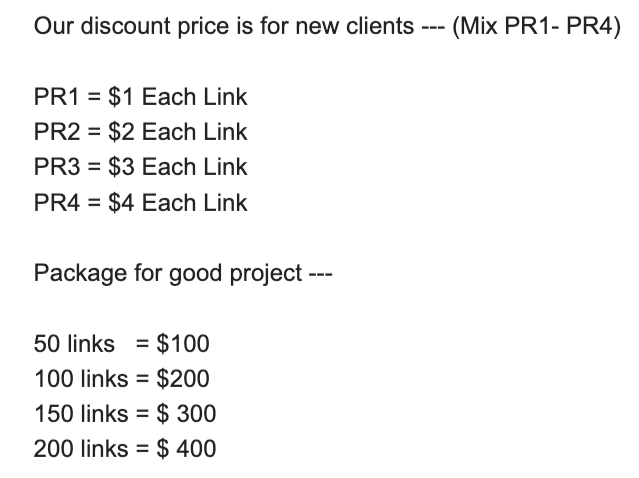Reporting on link building campaigns and learning how to improve
The final step in the process is to report on your efforts and evaluate the results. At this point, you should also take some time to see what you can learn and improve on.
Pre-deliver the report
The contents of a report should not come as a surprise. If the only time you communicate success (or indeed failure) to a client is via the monthly report, then you’re failing. Monthly reporting, or any kind of regular reporting, is good but it should not replace regular communication. Your client shouldn’t be completely blindsided when they read a report from you. Communicate with them regularly, whether it’s via phone calls or face-to-face meetings, so they know what is going on.
This helps you in a number of ways because you’re pre-delivering what the report contains. If you’ve had some problems throughout the month then it is much better to address them and try to solve them right away, rather than wait until the end of the month and give the client a nasty surprise. This also helps because you may even be able to solve the problem altogether and not have to mention it in the report – thus helping you in the future at the inevitable point where clients review all monthly reports.
Written communication sucks
One of the problems with reports is that they can often be interpreted in a number of ways. This is particularly true if you’re reporting on SEO and link building because there isn’t always a fixed standard of what is good and what is bad. Because of this, try to schedule either a call or a meeting to discuss the report verbally or in-person.
One way to do this is to schedule a call, then send the report over just before the call. Then you can talk the client through it step-by-step and answer questions or concerns they have straight away. Perhaps use a screen share tool such as Zoom or Google Hangouts.
This has another effect, too. It forces you to communicate regularly with clients and know exactly how they’re feeling throughout a project. You’ll be able to sense when they are happy and potentially avert problems by anticipating them in advance. You’ll also be able to get more information from them over the phone or in person.
So if you include a plan or strategy in your report for the next few weeks of activity, the client can sign it off or highlight potential problems immediately. If you just sent the plan via email, then it may take them a few days to read it and perhaps longer to highlight the problem to you – by which time you may have already started work.
Don’t report on too much or focus on the wrong metrics
There are many metrics we can report on, and it can be tempting to report on as many as we can find. But this probably isn’t a good idea because the client may not know which metrics really matter to them, and, if they just see numbers going down, they could be unhappy, even if those numbers are not the ones to focus on. Also remember that sometimes, your main point of contact may have to pass this report onto someone else who may not know the metric definitions very well - don’t make their life harder by including too many!
Let’s imagine that your report includes the following metrics and compare them in nice color graphics to the same time period the previous year:
- Traffic
- Number of links built
- Domain Authority of the links built
- Revenue from organic search
- Rankings
- Pageviews
Now, let’s imagine that compared to the same month in the previous year, the following metrics have improved:
- Traffic
- Revenue from organic search
However, compared with the previous year, the following metrics have declined:
- Number of links built
- PageRank of the links built
- Domain Authority of the links built
- Rankings
- Pageviews
Would the client be happy?
It depends on how good they are at focusing on the right metrics and their understanding of SEO. Ultimately, you need to care about traffic and revenue. Yes, the other metrics are important to keep an eye on and monitor over time, but they should not be a big focus of the report.
Month by month, you probably aren’t going to consistently increase every single metric. But as long as the overall trend shows an increase in traffic and revenue, then you should be comfortable knowing that you’re doing your job – and your client should be happy.
Because of this, you should be careful how you present your metrics to the client. One thing you can do is put the really important metrics in the main body of the report and put the secondary metrics in an Appendix. This means that they are there if the client needs them, but they are not the focus. Remember, one of the things I mentioned at the beginning of this book: link building is a means to an end.
Know what the client cares about
Leading on from the previous section, it is important to know what your client really cares about. If you’re working for a large company, and your main contact is the Head of SEO, you need to know how they are being measured by their boss, who may be the Head of Marketing. What KPIs are they measured on and how often are they checked?
Ideally, these things should be discovered at the start of the project in the kickoff meeting. This means you can focus on them right away and help your contact hit their targets.
Remember this:
Make your contact look good in front of his or her boss
If you can do this, you’ll be their friend (and be doing their SEO) for a long time!
Know who is going to see the report and talk their language
Most of the time, especially in large companies, your main point of contact will be the only one who reads the report on a monthly basis. So you need to make sure you cater it directly for that person.
However, every so often someone else may want to review the work you’re doing. In the extreme case, the CEO of a company may take a keen interest in how their company is performing through organic search and want to see your reports. It is important that you are made aware when this happens so that you can tailor the report for someone who, quite frankly, doesn’t care or may not even know what something such as Domain Authority is. They want to see real numbers and to see that things are moving in the right direction. On the other hand, if they see the average Domain Authority of links that you’ve built go from 48 to 42, they may panic!
If you are in this situation, the best advice I can give is to try and arrange a meeting where you can actually present to the CEO alongside your point of contact. Again, written communication isn’t the best option, so presenting in person, particularly to a non-SEO person, is very important.
Why reporting on the number of links built per month alone is bad
Related to this, setting targets for the number of links built per month, and no other metrics, is a bad idea, too. When you do this, I can pretty much guarantee that the quality of links being built will suffer. It is simple: you focus on hitting a single number, say 20 links a month, and no mention of quality or what the end goals of those links are. I know what you’re thinking:
“Well what about saying 20 links per month on domains that are DA30 or PR3 and above?”
Nope, that will not work either. This screenshot should explain all:
This is taken from an email I received from a company who do “link building,”
So if I spend $60 on 20 PR3 links, then I have hit my target for the month? Woohoo! I’m deliberately ignoring that we can no longer see even toolbar PageRank, because I still get these emails!
OK, it doesn’t work like that.
Hopefully you get the point. I’m going to reiterate a point from earlier:
Links do not pay the bills. They are simply a means to an end, with the end being a business goal of the company
If links do not help you hit a business goal, which I guarantee the link packages above will not, do not build them.
Example structure of an SEO report
To summarize my approach to this, I’ve outlined what structure you could use as a basis for your reporting.
- Executive summary: Assume the client doesn’t read anything else in the report apart from this section. Include everything they absolutely need to know here. Then copy and paste it into the email you send, too. Always, always have an executive summary.
- Key reporting metrics: This section should include the data that your client really cares about and make a difference in their business. Include a simple graph, and if possible, show the trend over the last six months and compared to the same period the year before.
- Activity summary: Tell the client what you’ve actually worked on this month and the status of it. For example, you may include things like the content you’ve published or the outreach that you’ve done. Something you can also include here is a reminder to the client on what you’re waiting for from them (e.g., you’re waiting for a piece of data or their sign-off on a piece of content). But you should be communicating this to them outside of the report anyway.
- Planned activity summary: Tell the client what the plan is for the next few weeks and how this fits in with the overall strategy of the project.
- Appendix: This is where you can include additional information and metrics. This is the place to include things like page views, time on site, actual links built, etc.
Summary
Here is a quick recap of the entire link building process:
- The sales process: selling a link building campaign
- Kicking things off: questions to ask yourself or your client
- Identify the business goals and how link building will help reach these
- Identify your assets, resources and USPs that help with link building
- Run analysis on your existing link profile and competitors
- Identify the techniques you plan to use
- Prioritize your techniques based on time and resources
- Plan your activity over the next few months
- Prepare or create your link building asset
- Find link targets and prioritize
- Conduct outreach
- Follow up
- Report on link building campaign and learn how to improve
I’d encourage you to refine this and add your own steps based on the campaign you’re working on. Hopefully this gives you a good foundation to build upon.

